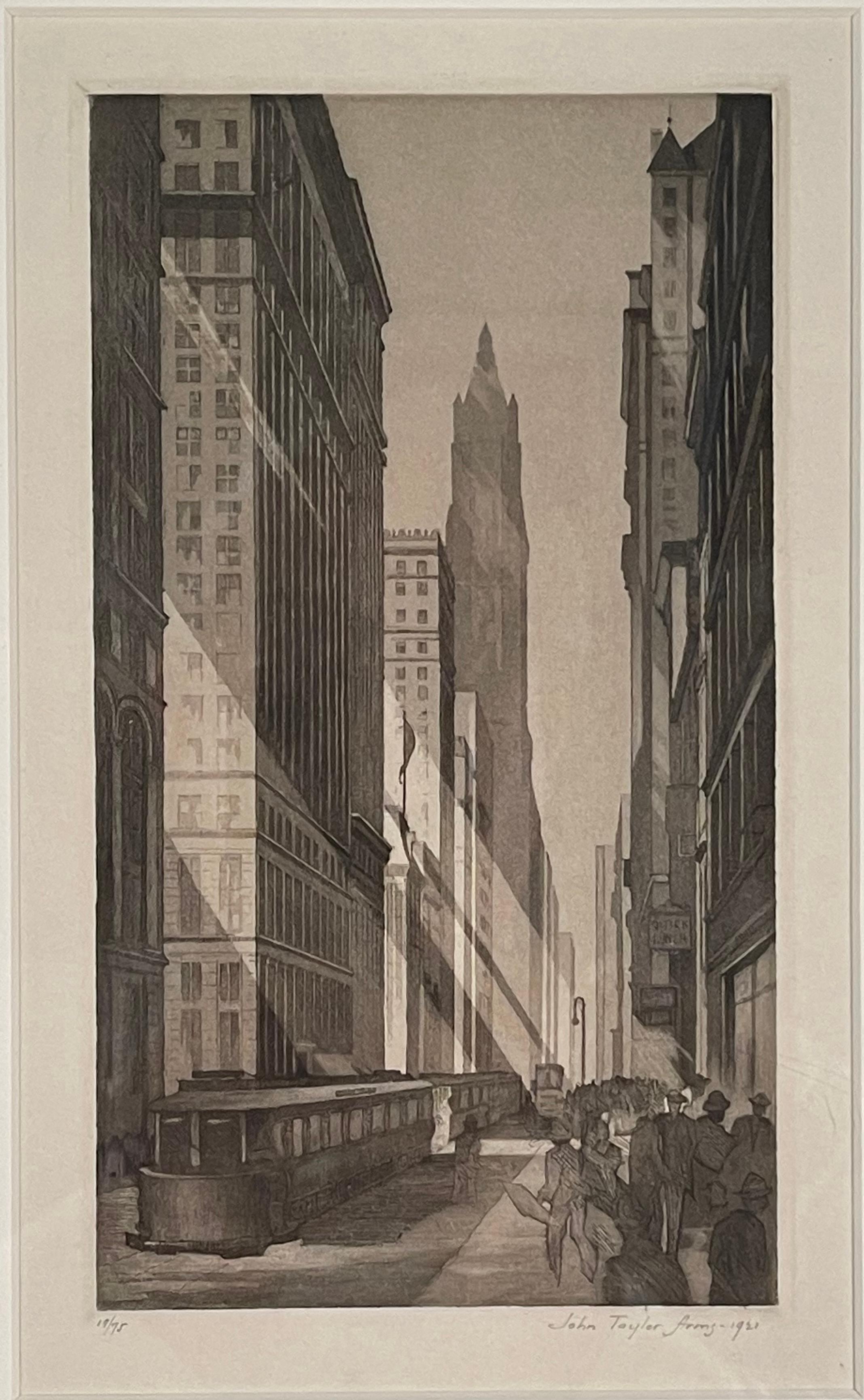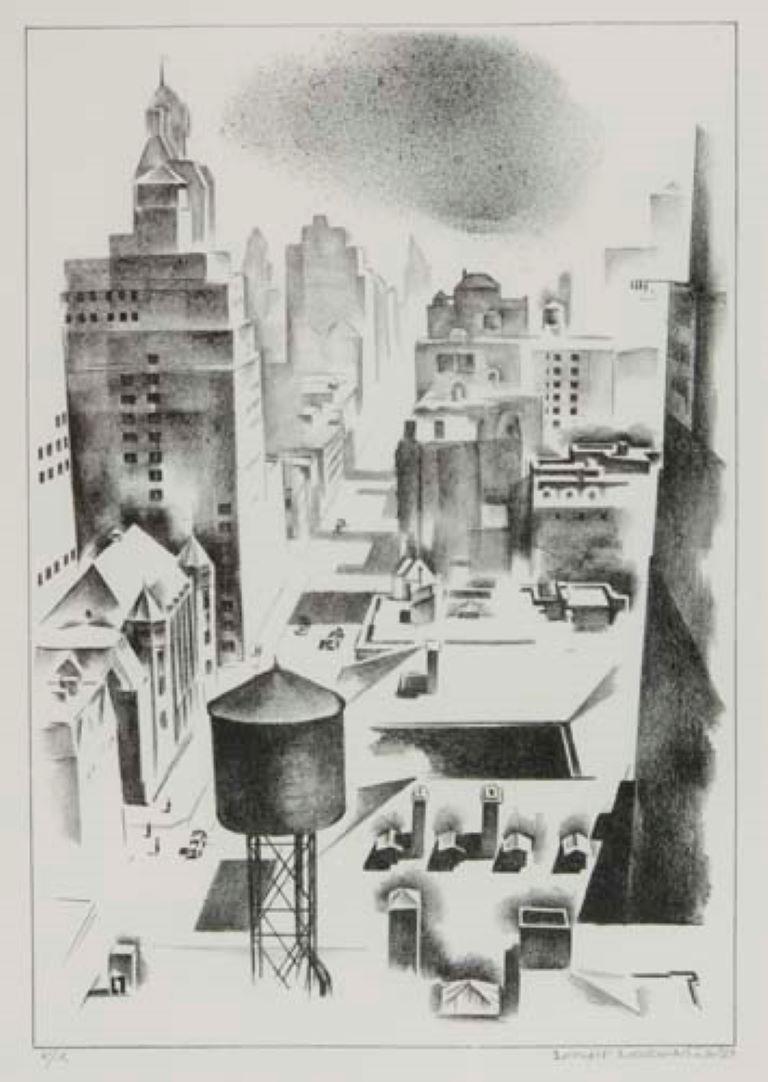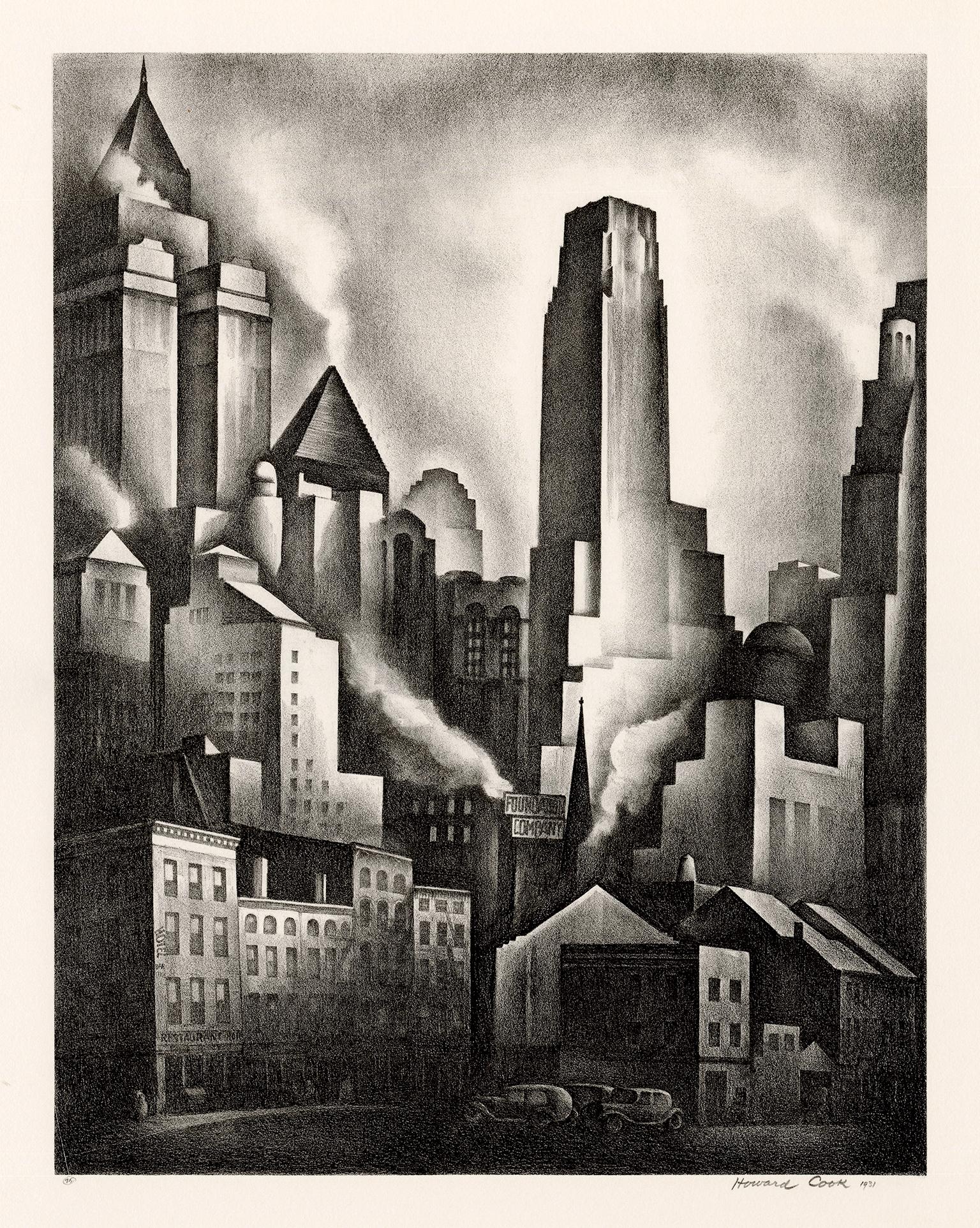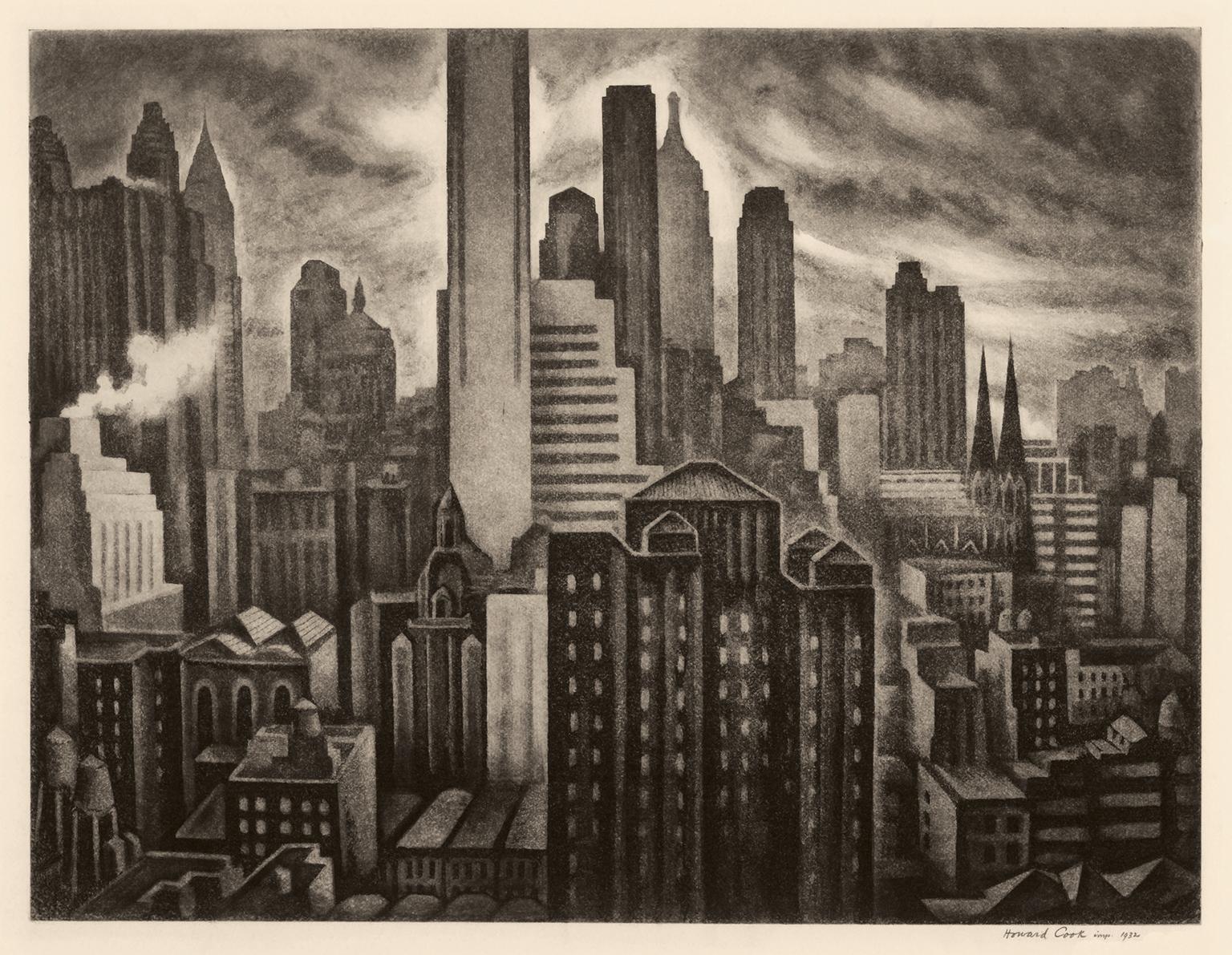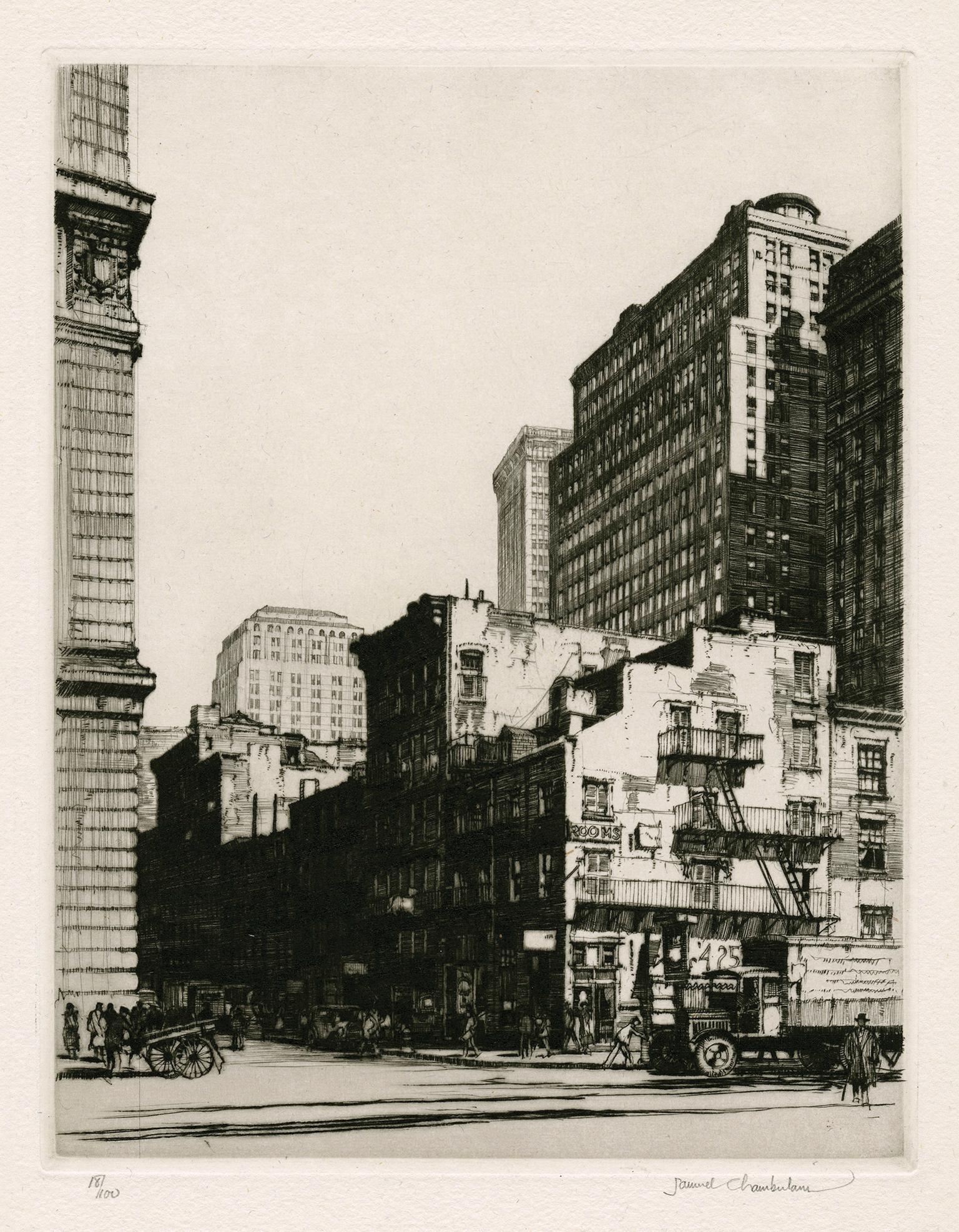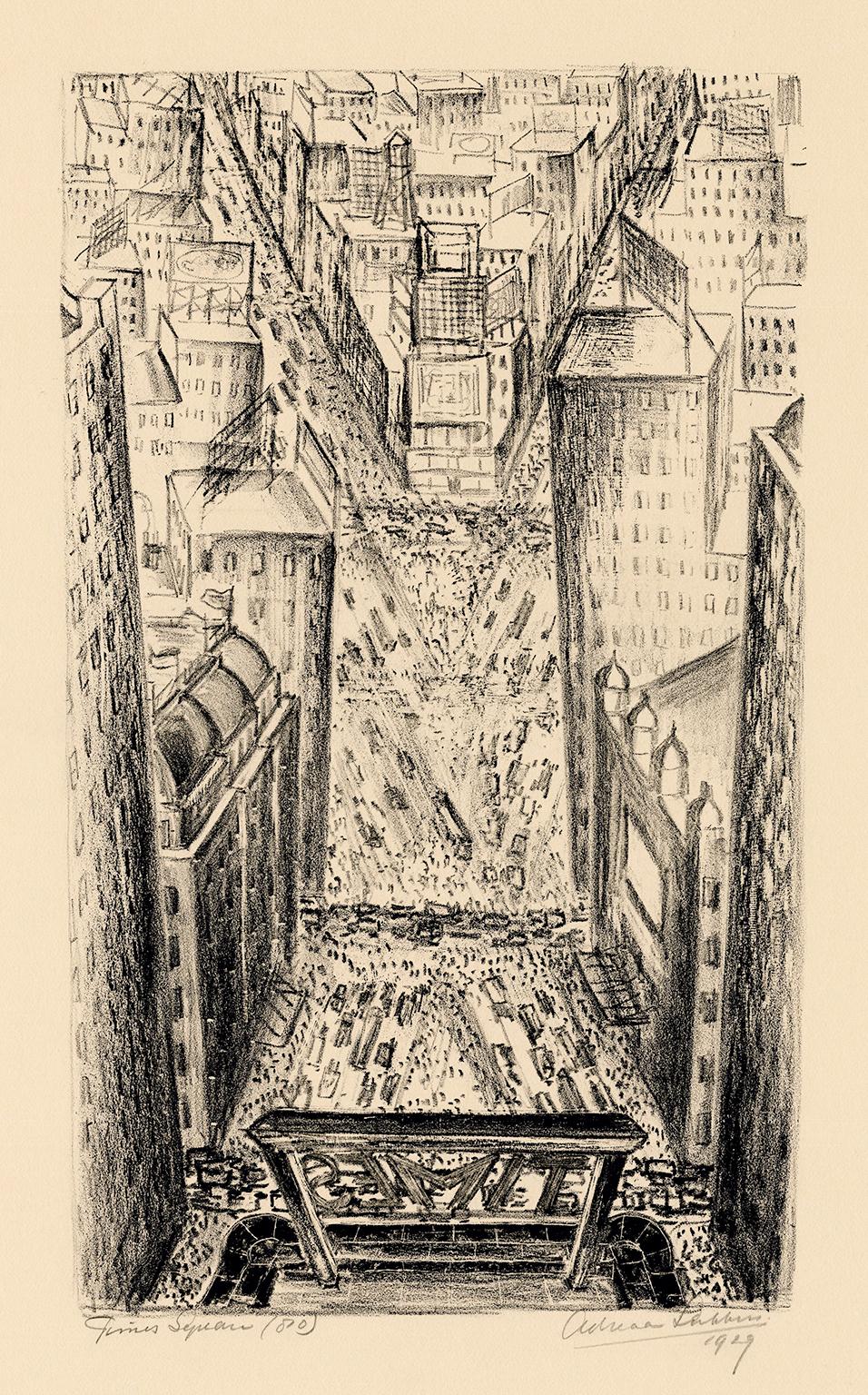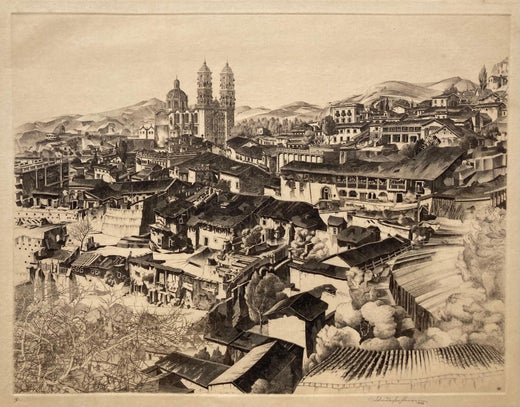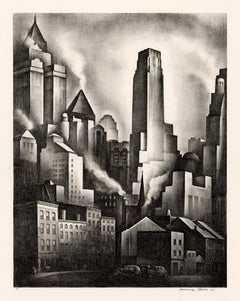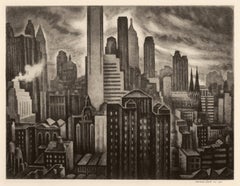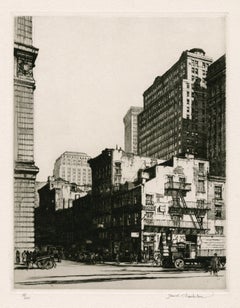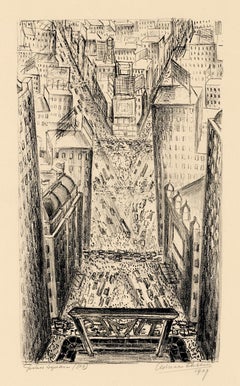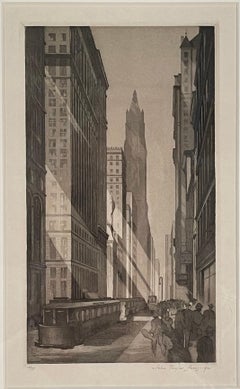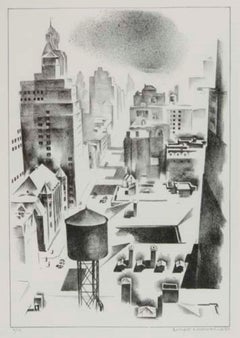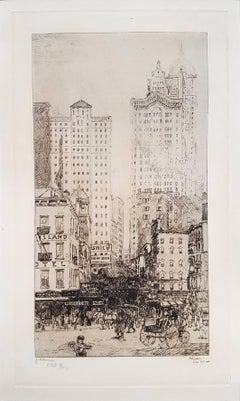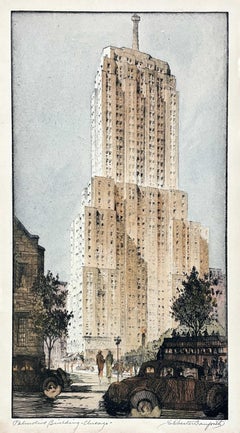John Taylor Arms'Downtown, New York' — 1920s Modernism1921
1921
About the Item
- Creator:John Taylor Arms (1887 - 1953, American)
- Creation Year:1921
- Dimensions:Height: 8.125 in (20.64 cm)Width: 4.57 in (11.61 cm)
- Medium:
- Movement & Style:
- Period:
- Condition:
- Gallery Location:Myrtle Beach, SC
- Reference Number:Seller: 1035161stDibs: LU53231987153
John Taylor Arms
John Taylor Arms was born in Washington, D.C., in 1887. Arms studied architecture at Princeton and MIT and later became the country’s finest etcher of his age. His renderings of European and American architectural subjects are not only beautiful, but they are unrivaled in their technical virtuosity and nuanced light. In a recent exhibit, the Cleveland Museum noted, Arms believed that art could be a tool for the spiritual and moral improvement of mankind and that Gothic cathedrals represented the most significant expression of man’s aspirations. He viewed printmaking as a vehicle for disseminating images of subjects that would uplift and inspire contemporary society. He served as President of the Society of American Etchers and as an ambassador for American printmakers and printmaking throughout the world.
- ShippingRetrieving quote...Shipping from: Myrtle Beach, SC
- Return Policy
More From This Seller
View All1930s American Modern Figurative Prints
Lithograph
1930s American Modern Figurative Prints
Etching, Aquatint
1920s American Modern Landscape Prints
Drypoint
1920s Modern Figurative Prints
Lithograph
1930s American Modern Landscape Prints
Etching
1930s American Modern Landscape Prints
Lithograph
You May Also Like
1920s Landscape Prints
Etching, Aquatint
1920s Art Deco Landscape Prints
Lithograph
Early 1900s Realist Landscape Prints
Etching
1930s Art Deco Landscape Prints
Paper, Etching, Aquatint
1940s American Modern Landscape Prints
Etching, Paper
Early 20th Century Art Deco Landscape Prints
Woodcut
